Sometimes Humanity Gets it Right
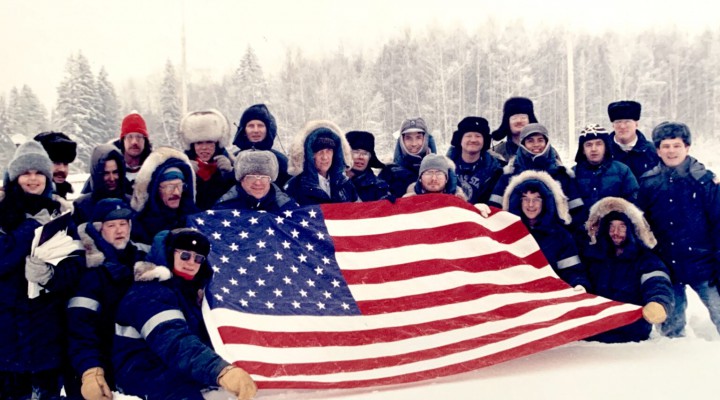
Disarmament in the time of Perestroika spotlights the pivotal contributions of U.S.-Soviet inspectors in helping to complete the 1988 INF treaty, which took effect after a period of bilateral tensions that could be considered more severe than those of today.
When it comes to U.S.-Russian arms control, sometimes history should repeat itself
President Joe Biden recently called for Russia to resume arms control negotiations aimed at keeping the existing New START treaty, scheduled to expire in 2026, viable.
Russia responded by suspending all inspection activity related to New START, declaring that the United States was seeking unilateral advantage by denying Russia access to inspection sites in the US, while demanding that Russia permit American inspectors access to sites in Russia.
Arms control, once the cornerstone of U.S.-Russian relations, appears to be on life support, and with it the future of international peace and security. My new book, Disarmament in the time of Perestroika: Arms Control and the End of the Soviet Union, provides an historical precedent which gives hope that the current negative trend in relations between the U.S. and Russia could be reversed if both parties were willing and able to recapture the spirit of the Intermediate-range Nuclear Forces (INF) Treaty, which entered into force on July 1, 1988.
The history of the INF Treaties first two years of implementation is the topic of The Life of Reason: Reason in Common Sense by the American philosopher, George Santayana. In it, he notes that “Those who cannot remember the past are condemned to repeat it.” The clear implication behind this phrase (focusing on the use of the term condemned) is that history is a collection of human error which, given human nature, will inevitably repeat itself unless a concerted effort is made to study the past and learn from the mistakes made to prevent their reoccurrence.
History, however, is much more than a simple recantation of past failure. Sometimes humanity gets it right. Sometimes the study of history is invaluable because it can provide a template of success that would be useful in navigating the troubled waters of human existence.
The story of the Intermediate Nuclear Forces (INF) treaty is one such instance.
The relations between Washington, D.C., and Moscow were at an all-time low. After a long Cold War, there was a brief period of détente, a genuine warming of relations where peaceful coexistence seemed to take priority over armed confrontation.
But then a series of geopolitical crisis, marked by Moscow’s military aggression against its neighbors, breathed life into Russophobia which had lain dormant. The Russian people, its culture, language and history were collectively denigrated, subordinated to a cartoon-like characterization of their leadership, which was presented to the American people as autocratic and cruel, a literal “evil empire.”
The U.S. soon became engaged in a proxy war with Moscow, sending arms and ammunition to help those whose lands had been invaded by the Russians fight back. The goal of the U.S. wasn’t to defeat Moscow, but rather weaken it by inflicting unacceptably high casualties and costs for their military aggression against a neighboring nation.
Economic sanctions were imposed by the U.S. and its allies that were designed to limit Moscow’s connectivity with the West with the goal of denying it a revenue stream while starving it of critical Western-sourced technology.
Arms control agreements, decades in the making, were shunted aside, with the result being that Washington, D.C., and Moscow found themselves engaged in a new arms race which threatened all of humanity with nuclear annihilation.
Neither side trusted the other, and the possibility of a realistic diplomatic offramp from the highway to hell that had been constructed by the U.S. and Russia seemed improbable, if not impossible.
Sound familiar? A knowledgeable observer of international affairs could reasonably assert that the scenario depicted above was a spot-on recitation of how things are going now between the United States and Russia.
However, the passage describes U.S.-Soviet relations between 1979 and 1986. The Soviet invasion of Afghanistan in 1979 set in motion a decade-long proxy war where the U.S. supplied Afghan insurgents with modern weaponry, including advanced Stinger surface-to-air missiles, that was used to kill hundreds, if not thousands, of Soviet troops. U.S. sanctions targeted Soviet energy exports and the U.S. walked away from the Strategic Arms Limitation Treaty (SALT) in protest over the Soviet invasion of Afghanistan.
Meanwhile, the Soviet Union was in the process of deploying a new mobile ballistic missile, the SS-20, which threatened the balance of power in Europe. The U.S. responded by deploying to Europe advanced ground-launched cruise missiles and Pershing II ballistic missiles. These weapons put Europe and, by extension the world, on the edge of the abyss, where any mistake or misunderstanding could trigger the launch of nuclear weapons that would end all of humanity.
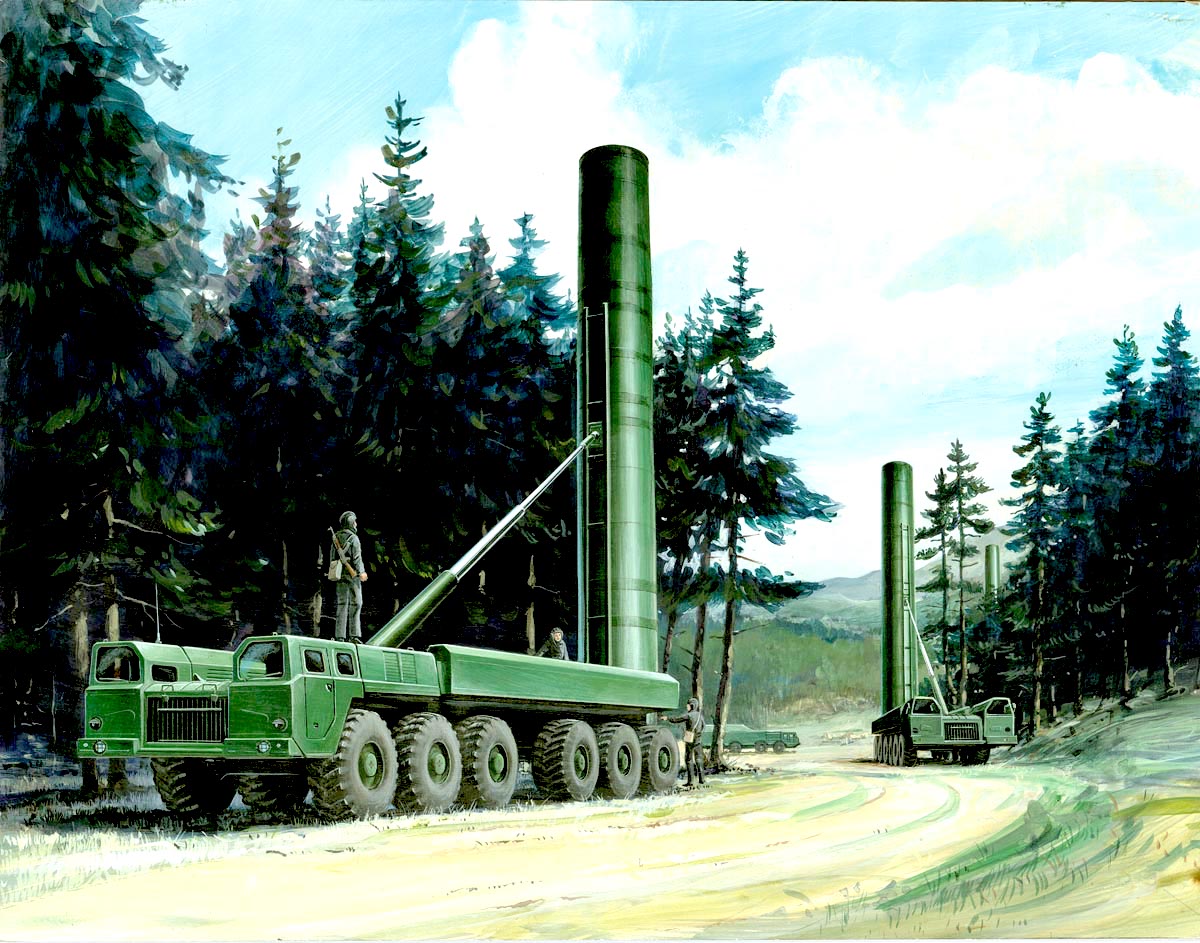
Illustration of Soviet SS-20 launchers. (Edward L. Cooper, Wikimedia Commons)
This was not simply idle conjecture. The experiences of Able Archer ’83, a NATO military exercise in the fall of 1983, serves as testament to the danger. Designed as a command post exercise to test the various processes associated with the use of NATO’s nuclear weapons, Able Archer ’83 was instead construed by the Soviets as representing preparations for an actual preemptive nuclear attack by NATO.
The level of mistrust between the U.S. and Soviet Union at the time was immense, as were the consequences. While Americans today wrestle with the issue of Britnney Greiner and her arrest and prosecution by Russia on drug charges, in the 1980s the U.S. had to deal with the Soviet downing of a Korean airliner, KAL 007, in which 62 Americans, including a U.S. congressman, were killed, and the shooting death of an active duty Army officer, Major Arthur Nicholson, by a Soviet sentry outside a Soviet military facility in East Germany.
Today, the deterioration of U.S.-Russian relations is a matter of personal inconvenience. In the 1980s, it was literally a matter of life and death.
If one were to turn on the television today, and/or read the mainstream newspapers and journals, for the purpose of trying to ascertain the current state of affairs between the U.S. and Russia, the inescapable conclusion mandated by any logical assessment of the available data would be that they are at the lowest level in decades and that there is no discernible path forward.
Arms control has been a constant go-to diplomatic move for both parties, the final bastion of reason around which a red line could be drawn that said “no further” regarding the deterioration of relations, if for no other reason than neither side wanted to release the nuclear genie that had been bottled up back in 1987, when the INF treaty was signed. With the future of the last remaining arms control treaty — New START — now in doubt, even this limit no longer appears sacred.
Which brings us back to George Santayana.
“Those who cannot remember the past are condemned to repeat it.”
History is a fickle thing. Students of history either operate at the mercy of those individuals — historians — who have taken it upon themselves to assemble data in a manner that best represents a factual narrative of a given place and time or undertake to do the fundamental research necessary to produce useful and meaningful works of history, in which case their findings are governed by the availability of primary source material sufficient to the task.
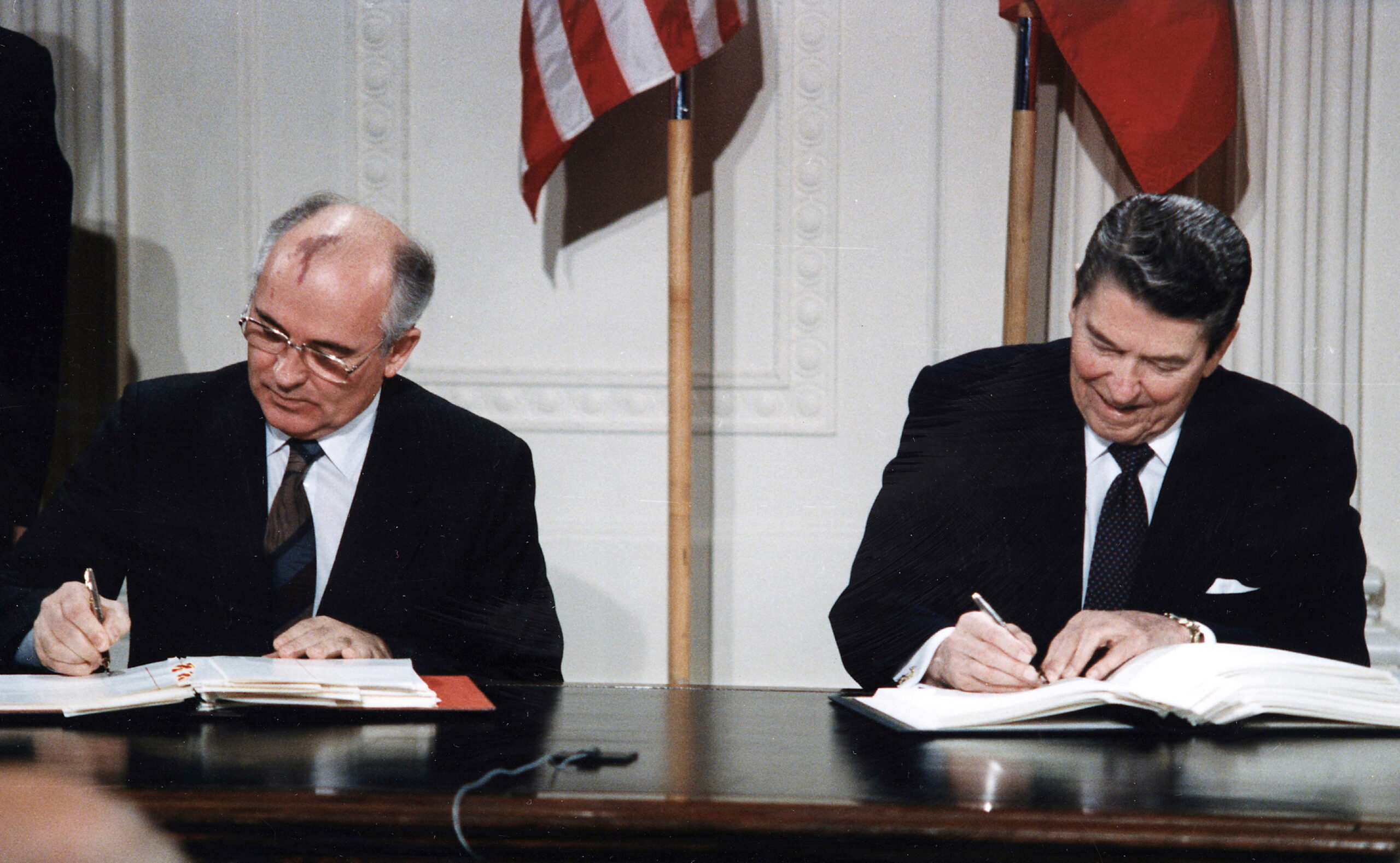
U.S. President Ronald Reagan and Soviet General Secretary Mikhail Gorbachev signing the INF Treaty in the White House in 1987. (National Archives and Records Administration, Wikimedia Commons)
The INF Treaty, and the history of its creation and initial implementation, is a case where historians are not in danger of forgetting the lessons offered by that experience, but rather denied the opportunity to learn these lessons to begin with because they have been unable to gain access to the source material necessary to capture the totality of that experience.
As such, any template of success constructed from the available record would be incomplete, and as such unable to effectively reproduce the success of the events involved.
There have been histories written about the INF Treaty, both in terms of its negotiation (David T. Jones’ outstanding The Reagan-Gorbachev Arms Control Breakthrough stands out) and implementation (Joseph P. Harahan’s On Site Inspections under the INF Treaty is unique in this regard).
While competent histories, the authors were limited by the very treaty that they were writing about (the inspection protocol of the INF Treaty, Section VI, paragraph 2, declares that “Inspectors shall not disclose information received during inspections except with the express permission of the inspecting Party. They shall remain bound by this obligation after their assignment as inspectors has ended.”)
The result is that anyone seeking to “recapture” the experience of the formative phase of the INF treaty would be limited to dry, overly technical texts which missed completely the intimate details that define a place in time, and the people who populated it.
As one of the original team of military personnel assembled by the U.S. Department of Defense to carry out inspections inside the Soviet Union pursuant to the INF Treaty, I helped write the book about on-site inspections.
As a member of the advance party of inspectors dispatched to the Soviet Union, back in June 1988 (two weeks prior to the treaty entering into force on July 1), I was one of the first inspectors to turn the “book” of on-site inspections into reality.
Prior to the INF Treaty, both the Soviet Union and the United States were loath to allow personnel from the other side access to sensitive locations deemed relevant to various arms control agreements, and as such critical to verification activities necessary to ensure compliance with whatever restrictions or conditions had been imposed by any treaty.
This meant that verification was at the mercy of “national technical means” (NTM, or satellites), which were limited by the state of technology at the time and, as such, unable to overcome the deep concern that existed in both Moscow and Washington that the other side would take advantage of any physical presence on the soil of the other to carry out espionage operations.
The level of compliance verification mandated by the INF Treaty, however, precluded the exclusive use of NTM. Given the importance that both the U.S. and Soviet Union attached to the INF Treaty, it was agreed that on-site inspections would be incorporated into the treaty, not as a supplement to NTM, but rather as the principal means of compliance verification.
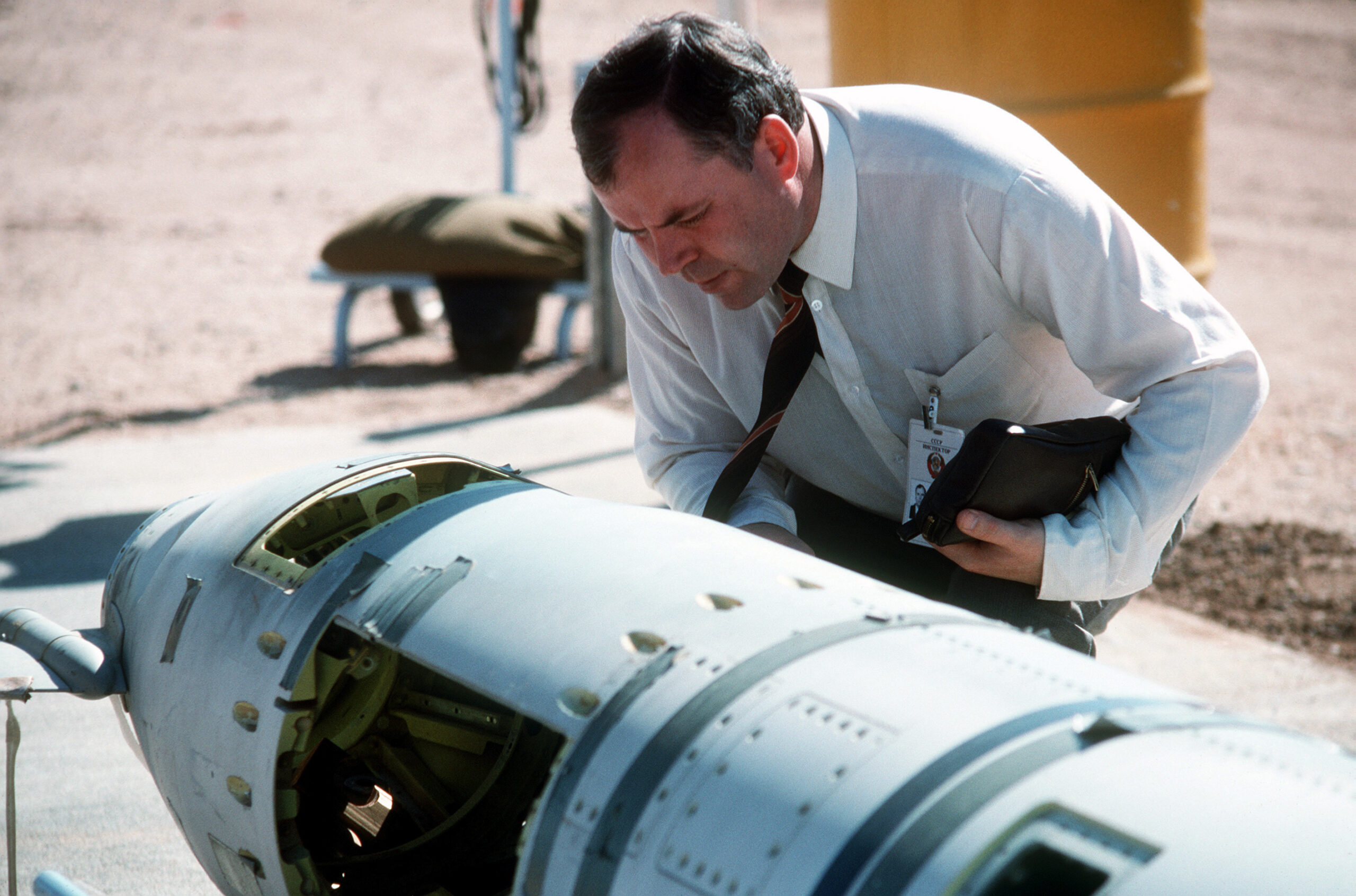
A Soviet inspector examines a BGM-109G Gryphon ground-launched cruise missile in 1988 prior to its destruction. (Jose Lopez. Wikimedia Commons)
There were several kinds of inspections envisioned under the INF Treaty.
-Baseline inspections were conducted for each location listed in the treaty text as an inspectable site and were intended to establish a baseline of data which would be used for future verification purposes.
-Elimination inspections oversaw the disposition of missiles and missile support equipment scheduled for destruction under the treaty.
-Closeout inspections were conducted when a site had been deemed to have been “cleansed” of all treaty-limited items and/or activities.
-Short notice inspections were conducted to either verify that a site, once “closed out,” remained in compliance, or to investigate any potential violation.
These four inspection types represented the core inspection activity conducted under the INF Treaty and, indeed, were originally envisioned as the only inspection activities that would be carried out. However, in November 1987 — only weeks away from the treaty signing ceremony scheduled to take place on Dec. 8 in Washington, D.C., — the Soviets informed their American counterparts that the first stage of the SS-25 intercontinental ballistic missile, which was not affected by the treaty, was virtually identical to the SS-20 intermediate-range ballistic missile, which was prohibited under the treaty.
In the early INF negotiations, the Soviets had argued for their need to retain a limited number of SS-20 missiles which would be deployed in Asia, away from the European theater of operations.
The U.S., which was arguing against any retention of SS-20 missiles, came up with a notional inspection scheme — perimeter portal monitoring, or PPM — which would “capture” a Soviet missile production facility — in this case, the Votkinsk Missile Final Assembly Plant, located some 750 miles east of Moscow in the foothills of the Ural Mountains — in order to monitor production to ensure that the Soviets did not produce more missiles than permitted under a potential INF Treaty.
The PPM scheme was considered so intrusive by the Soviets that they quickly agreed to the “zero” option to avoid having to implement it.
Now, confronted with the Soviet information about the SS-25/SS-20 first stage similarity, U.S. and Soviet negotiators were faced with either delaying or cancelling the treaty altogether, or quickly agreeing to an inspection scheme that could be incorporated into the treaty text that would allow for verification that any SS-25 missiles produced by the Soviets were not prohibited SS-20 missiles. The PPM inspection scheme, which was never intended to be implemented, was chosen as the solution.
Unlike the other four categories of inspections under the INF Treaty, for which detailed procedures had been agreed upon and spelled out in detail in the inspection protocols of the treaty text, PPM (which incorporated untested verification technologies such as infrared measuring and radiographic imaging) had no such agreement.
It was decided that the specifics regarding PPM installation and operations would be spelled out in a separate memorandum of agreement to be negotiated by the US and Soviet sides after the INF Treaty was signed, and ideally before the treaty went into force (scheduled for July 1, 1988.)
As fate would have it, the technical details associated with PPM were too complex to be resolved in such a short period of time, meaning that when the first U.S. inspectors arrived in Votkinsk to begin the installation and operation of the PPM facility, they had no agreed upon procedures to govern their work.
Treaty negotiators had passed the buck, leaving it up to the U.S. inspectors and their Soviet counterparts at the Votkinsk factory to develop these procedures in a collaborative fashion. This created a set of circumstances unique in the history of arms control.
On one side an inspecting party was under pressure to install and operate a technically complex monitoring system of unprecedented intrusiveness. On the other, an inspected party was tasked with producing weapons deemed critical to their national security and protecting information and data related to this production from foreign intelligence services. Somehow, they had to come together to ensure the common objective of treaty compliance.
In one fell swoop, the issue of PPM transitioned from a technical problem into a human problem. When U.S. arms control experts agreed to introduce the “human factor” into compliance verification, they had done so on the conditions that the humans would be operating from a very specific playbook — the inspection protocols — which allowed for virtually zero deviation from agreed-upon technical parameters.
There was to be no “free play” where inspectors were given latitude to adapt to unforeseen circumstances. From the standpoint of the arms control experts, the unpredictable nature of the “human factor” was in and of itself a threat to compliance verification, representing as it did a deviation from the strict norms and standards the believed were required for that mission.
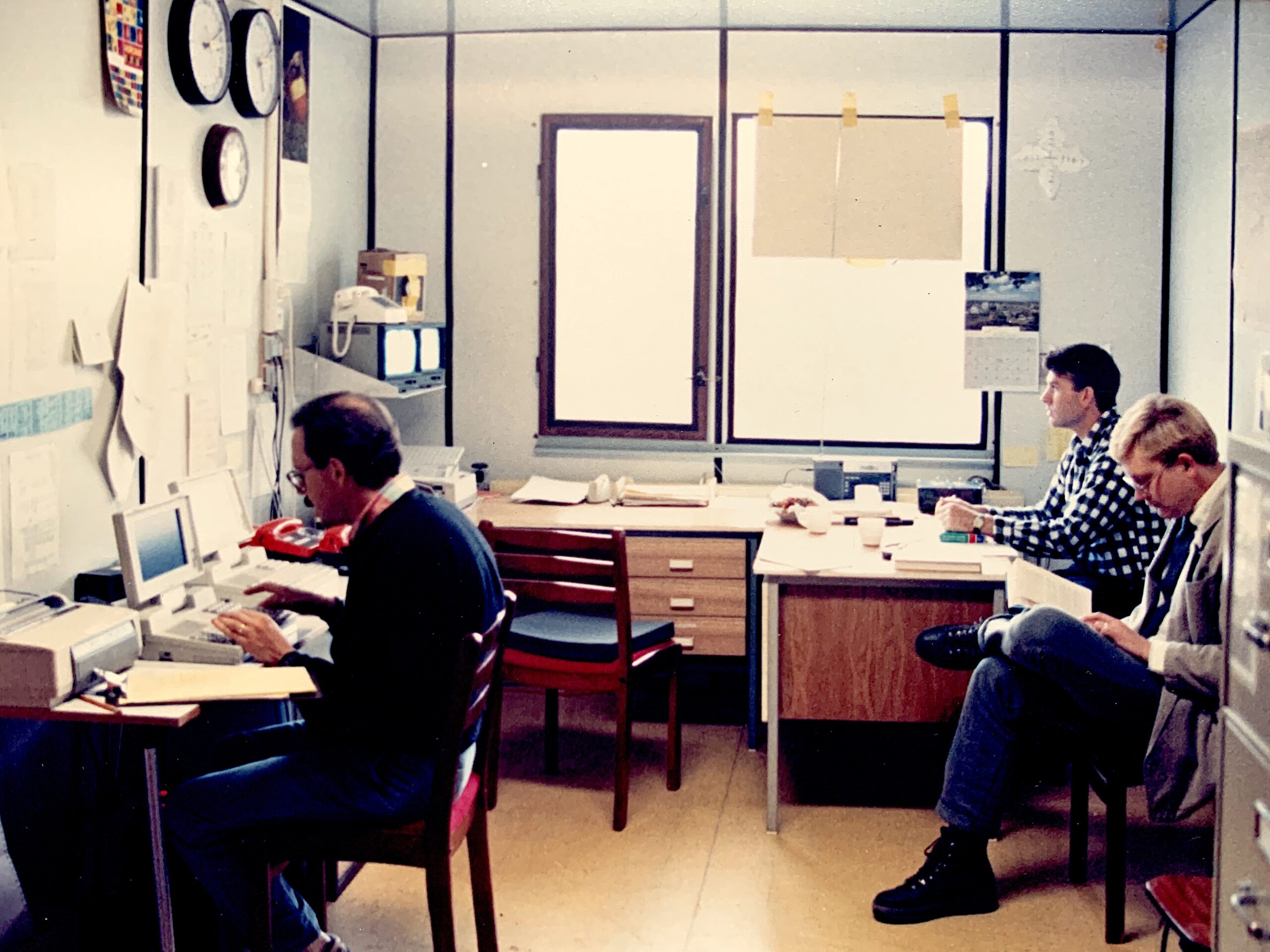
Inspectors in their office, July 1988. (Scott Ritter)
PPM, however, was all about the “human factor,” which was to prove to be critical for the success of the treaty. The “human factor” was captured in the daily logs maintained by the inspectors, in the regular reports from the inspectors to headquarters, and in the written correspondence between the inspectors and their Soviet counterparts.
These reports provide a day-by-day, and in some cases hour-by-hour, account of how the U.S. and Soviet inspectors labored together to accomplish the impossible — to successfully install and operate a PPM facility while overcoming unimaginable logistical and political obstacles raised by both parties.
The story of how this collaboration unfolded, however, could not be told in full without the aforementioned documents and reports. While the information contained in these documents was unclassified, it remained protected from publication by the treaty provisions prohibiting unauthorized disclosure.
When I was an inspector in Votkinsk, I was approached by Marine Corps Colonel George Connell, who served as one of two site commanders of the Votkinsk Portal Monitoring Facility (the other was an Army colonel, Doug Englund). I had, by this time, published two scholarly articles in highly regarded academic journals, and Colonel Connell wanted me to turn my research and writing skills to capturing the history of the Marine Corps involvement in the Votkinsk inspection experience.
I began collecting the various reports produced by the inspection experience, creating an archive that would serve as the basis for my writing. I eventually produced a draft article, which was submitted to the Marine Corps Gazette for consideration. The editors, however, deemed the topic too esoteric for the general Marine Corps audience, and turned the manuscript down.
Colonel Connell told me not to fret. “This is a story that must be told some day, and you are uniquely positioned to tell it.” Thus motivated, I continued to assemble my archive of reports, hoping that someday I would be able to write the story of the Votkinsk inspection experience.
In the fall of 1991, I published an article, “Soviet Defense Conversion: The Votkinsk Machine Building Plant,” in the journal Problems of Communism.
While much of the article drew upon open-source materials, I did make use of some of my archived inspection reports. The Department of Defense, when reviewing the manuscript as part of their prepublication security procedures, objected to my use of this information, as it represented a potential violation of the treaty language prohibiting the unauthorized disclosure of information received during inspections.
While I was able to reach an accommodation regarding the article, the experience had a chilling effect on any future writing projects I had envisioned regarding Votkinsk and my archive of inspection reports.
Indeed, I had begun work on a book-length project tentatively entitled Perestroika in the Hinterlands, that I felt compelled to terminate because of the inability to fully incorporate the information I had collected during my time as an inspector.
Then, in August 2019, President Donald Trump precipitously withdrew the U.S. from the INF Treaty. His action was followed a similar move on the part of the Russian Federation. Overnight, the prohibition regarding the use of inspection-derived information evaporated, since the treaty that had imposed it no longer existed.
For the next two and a half years I devoted myself to turning the Votkinsk archive into a book that captured the spirit of the “human factor” that made the Votkinsk experience what it was in the early years — one of the greatest success stories ever.
That book is Disarmament in the Time of Perestroika: Arms Control and the End of the Soviet Union, which was published this summer by Clarity Press.
Unfortunately, I had to write this book without the mentorship and guidance of George Connell, who had passed in 2015. I was likewise denied the wisdom and insight of Doug Englund, who together with George Connell made the Votkinsk experience the success that it was. Doug passed in 2017.
The presence of these two men was felt in every page of every document I read and every photograph I examined while researching the book. I dedicated the book in the memory of both men, “two ardent Cold Warriors transformed into Pioneers of Peace.”
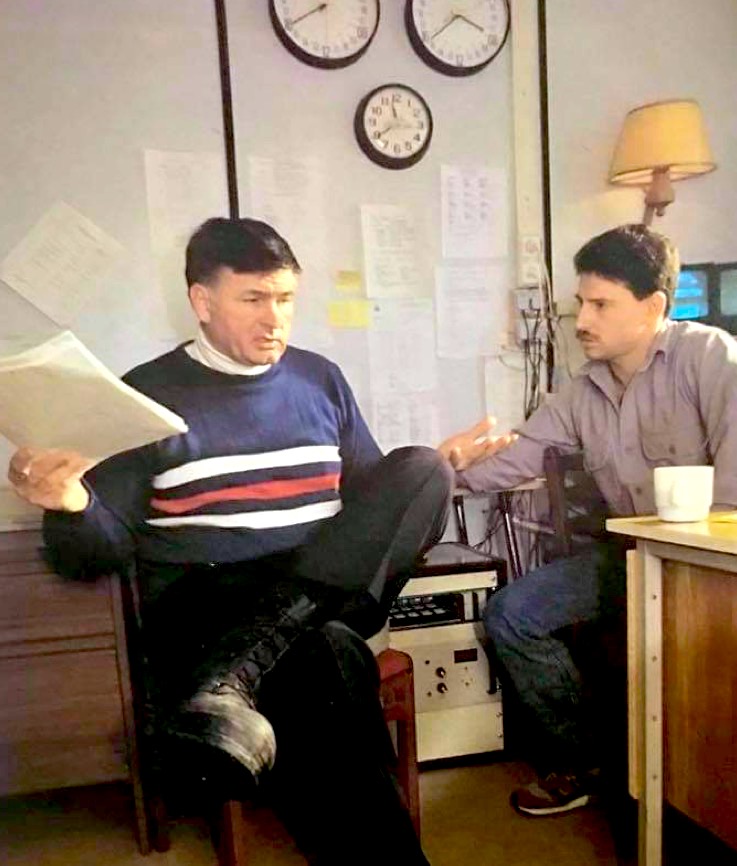
Doug Englund and John Sartorious. (Scott Ritter)
While the book is intended to be a definitive history of the first two years of the Votkinsk inspection experience, there is no escaping the fact that it is also an autobiographical work, hence the notation on the cover, “A Personal Journal.”
Much of the story of the work of the inspectors, and their interactions with their Soviet counterparts, is told through my eyes, and I have cast myself as sort of an “everyman,” a justifiable role given that most of what I impart in the book, especially the emotional and physical realities encountered, being very much a shared experience.
When I first arrived outside the Votkinsk Factory in June 1988, I was confronted by an empty field except for a single road and rail line that led to the imposing main gate of the walled-off facility.
A year later, that field had been transformed into a self-contained housing complex comprised of four two-story dormitory-like structures, a data-collection center which served as the operational hub of the inspections, a temperature-controlled structure used to carry out visual inspections of missiles leaving the factory, a warehouse where the spare parts and equipment needed by the inspectors to operate and maintain the monitoring facility were stored and a giant concrete-and-metal structure intended to house a massive X-Ray device, known as CargoScan, which the inspectors would use to make sure SS-20 missiles weren’t shipped out of the factory disguised as SS-25s.
The story about how this transformation occurred is the heart of the book. To construct this portal monitoring facility, inspectors and inspected alike had to come together in what can only be described as a labor of love, overcoming all the challenges Mother Nature could impose in terms of sweltering, mosquito-and-tick-infested summers, the oppressive muck and mire produced by the spring and fall mud seasons and the mind-numbing cold of the Russian winter to build a complex according to a treaty-mandated timeline which was unforgiving in its exactitude.
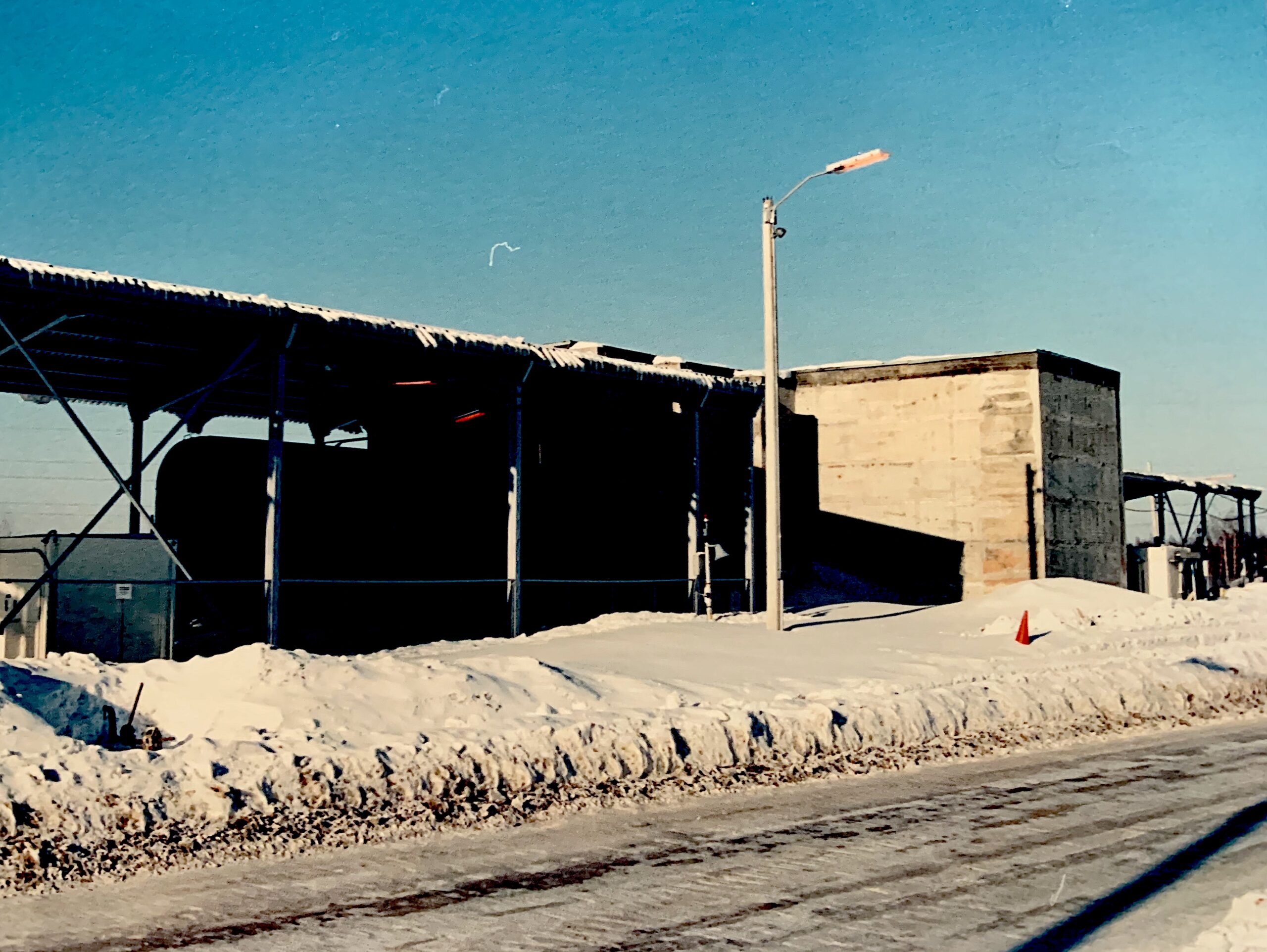
Cargoscan. (Scott Ritter)
The “human factor” made this all possible, with U.S. military officers and civilian contractors working alongside Soviet factory workers in common cause. I tried my best to do these men and women justice, breathing life into their names and deeds so that they become more than just words on a page, but rather an extension of the readers themselves, who hopefully feel like they have been transported back in time to Votkinsk circa 1988-1990.
The inspection experience did not occur in a vacuum, but rather was part and parcel of one of the more turbulent periods in the history of the Soviet Union, namely the implementation of the policy of perestroika by Mikhail Gorbachev, involving as it did the complete restructuring of the Soviet political and economic system.
When I arrived in Votkinsk in June 1988, Gorbachev had convened the 19th All-Party Union Conference for the purpose of injecting the concepts of perestroika into the mainstream of Soviet society. The conference set off a revolution of sorts which resonated throughout the Soviet Union, and especially so in a town like Votkinsk, where Votkinsk factory dominated every aspect of the day-to-day lives of its citizens.
The inspectors were direct observers of this revolution, both through their extensive contact with the citizens of Votkinsk (we lived among them), and by reading the local Soviet press.
Under the new regime of glasnost, or openness, the local Communist Party newspaper, Leninski Put’ (“Lenin’s Path”) was transformed from a simple mouthpiece of authority into a first-rate journalistic outlet, with its editorial staff and stable of capable writers performing quality investigatory reporting that would put many of their American counterparts to shame. Through their work, the U.S. inspectors were able to peer inside the humanity of Votkinsk, getting a detailed glimpse into the good, the bad and the ugly reality of Soviet life in transition.
I was able to capture these journalistic accomplishments in my Votkinsk archive and drew extensively on the information and insights contained in the articles published in Leninski Put’ and other local and regional newspapers and magazines to capture the day-to-day reality of life in Votkinsk during the time of perestroika.
In doing so, I was able to weave together the disarmament aspects of the inspection experience and the human reality of perestroika into a seamless narrative that captures the way each impacted and influenced the other.
This is the crux of the title of the book, Disarmament in the time of Perestroika. In many ways, the INF Treaty was a byproduct of perestroika, the living manifestation of the changes being sought by Gorbachev in pursuing that policy. And, in the end, when the challenges of implementing perestroika proved to be too much for the Soviet system to take, the disarmament processes triggered by the INF Treaty set in motion the events which led to the collapse of the Soviet Union (hence the second part of the title of the book, Arms Control and the End of the Soviet Union.)
The INF Treaty survived the collapse of the Soviet Union, a testament to the work of those on both sides to build something of lasting consequence. After the treaty-mandated 13-year inspection period ended, on June 1, 2001, Votkinsk transitioned away from its INF responsibilities, and instead functioned solely in its role as a Strategic Arms Reduction Treaty (START) portal monitoring facility, a role it formally assumed in 1994.
This longevity, however, was not a given at the start of the INF experience in Votkinsk. Cold War paranoia infected the minds of many in Washington, D.C., who were fundamentally opposed to any meaningful disarmament between the U.S. and Soviet Union.
Led by Sen. Jesse Helms, this group sought to trip up the INF Treaty at every turn, accusing the U.S. inspectors of incompetence and their Soviet counterparts of noncompliance in building their case that the United States should terminate the treaty on the grounds that it posed a threat to national security.
At the heart of this controversy was the CargoScan X-Ray system. It was supposed to be installed and operating by the end of December 1988, but the summer of 1989 saw the system still undergoing testing in the United States.
Construction of the concrete and steel structure that would eventually house it was impacted by this delay, and by the reality that, given the rushed nature of turning the theory of PPM inspections into reality, the U.S. lacked the kind of detailed construction blueprints and design drawings needed to assuage Soviet concerns that the United States might be installing something that permitted data to be collected above and beyond that required by the treaty.
The political pressure placed on the inspectors to get CargoScan up and running clashed with the Soviet demands that CargoScan operate only within the parameters mandated under the INF Treaty, leading to a major crisis in March 1990 which threatened to bring down the INF Treaty.
The story about how this crisis came to pass, and how the inspectors and their Soviet counterparts were able to reach an agreement about the operation of CargoScan, thereby saving the treaty and, by extension, nuclear disarmament between the US and Soviet Union, is told in vivid detail, both in terms of the technical and political issues involved, and the “human factor” behind every decision and action taken.
Heroes emerge on both sides, people like George Connell and Doug England, the site commanders upon whose shoulders the burden of command rested.
Others, like Barrett Haver and Chuck Meyers, served as the foundation upon which Connell and Englund built their inspection team. What these men had in common, besides their undying commitment to seeing the task of installing and operating the Votkinsk portal monitoring facility, was that they were supposed to be there.
All four men were trained as Soviet foreign area officers, which meant that they possessed formal language training, advanced degrees in Russian area studies and specialized cultural immersion training so that they could fulfil tasks specific to the Soviet threat.
When the Department of Defense sought to build the inspection team that would implement the INF Treaty, they almost exclusively drew upon the available cadre of Soviet foreign area officers to fill the required billets, men who by the nature of the experience required to serve as a FAO wore the rank of major, lieutenant colonel and colonel.
But the unique nature of the Votkinsk experience, emanating as it did from unforeseen circumstances, meant that additional human resources were required which did not conform to the stringent FAO-like parameters envisioned by the Department of Defense.
A cadre of junior officers — mere lieutenants at the time they joined the inspection team —ended up playing an oversized role in the inspection process. Included in this group was John Sartorius, an Army officer who formerly served as an enlisted Russian linguist tasked with monitoring Soviet communications. John was a walking encyclopedia of treaty-related knowledge and was the go-to person when it came to crafting the critical compromise that brought an end to the crisis surrounding the installation and operation of CargoScan.
John literally saved the treaty.
Another junior officer whose accomplishments left their mark was Stu O’Neal. Like John, Stu had previously served as an enlisted man in the U.S. Army, where he was assigned to a top-secret Special Forces unit stationed in Berlin known as Detachment A. While in Berlin, Stu and others from Detachment A were tasked with providing a team to help with the rescue of American hostages in Iran. When a helicopter collided with a transport plane on the ground in Iran, setting them both on fire and trapping several men inside, Stu ran into the burning aircraft to rescue the trapped men.
In Votkinsk Stu was not called upon to perform feats of physical heroics, but rather serve at the front line of the inspector experience. Stu was the first inspector to conduct an external inspection of a Soviet SS-25 missile in its launch cannister, and the first inspector to conduct a visual inspection of the interior of the cannister once opened. He was the duty officer during the height of the CargoScan crisis and was the first duty officer to carry out an imaging inspection of an SS-25 missile using CargoScan. These “firsts” did not happen by accident but were reflective of the adage that true leaders lead from the front.
Stu was a true leader.
The “human factor” included the civilian contractors, without whom nothing would have been accomplished. John Sartorius’ encyclopedic mind was enhanced by the practical engineering talents of men like Sam Israelit and Jim Lusher. And if Barret Haver and Chuck Meyers were the foundation upon which the Votkinsk portal monitoring facility was built, then the brick and mortar was comprised of civilian contractors like Anne Mortenson, Zoi Haloulakos and Mary Jordan, who provided invaluable linguistic and operational support, and Hal Longley, Mark Romanchuk, and Joe O’Hare, who labored in the heat, mud, snow, and ice to turn disarmament theory into reality.
The Votkinsk experience was not just about work, however, but about life. None lived life in Votkinsk with the gusto displayed by Justin Lifflander. Justin was joined by Jim Stewart and Thom Moore in forming a counterculture movement centered on a never-ending poker game which convened in an unauthorized recreation center established in the basement of one of the housing units.
Here inspectors would gather to unwind after long and trying days building and operating the portal facility. The humanity of this environment is best expressed by the music written and performed by Thom Moore, an accomplished musician and songwriter before he decided to volunteer as an inspector in Votkinsk. His song, Prayer for Love, was written in Votkinsk, in between work and poker games, and stands as a living testimony to the humanity of everyone who played a part in the Votkinsk experience.
The Americans did not work in a vacuum — everything they did was as part of a team which included their Soviet counterparts, whose work and lives the book tries to capture as well. Men like Anatoli Tomilov, the Director of Department 162, tasked with overseeing the implementation of the INF Treaty tasks at the Votkinsk factory, and his deputy, Vyacheslav Lopatin, a huge bear of a man entrusted with technical security matters.
Given the nature of their respective tasks, Tomilov and Lopatin were at the center of every controversy that emerged between the US inspectors and their Soviet hosts. Their common sense, intelligence, and desire to accomplish the mission played a major role in overcoming all challenges faced in Votkinsk.
Anatoli Chernenko, who was responsible for all construction activities at the site, moved mountains to make Votkinsk a reality, overcoming Soviet bureaucratic inertia and American incompetence to finish the gargantuan construction tasks he was assigned to accomplish through sheer force of will.
And the Soviet factory workers — men like Aleksandr Yakovlev, Vladimir Kupriyanov, Nikolai Shadrin, Aleksandr Fomin, and Yevgenii Efremov — whose lives had been previously centered around the construction of missiles designed to strike targets in America, but who were now called upon to help disarm their nation of these very same weapons, all the while knowing that as they did so, they were undermining the very economic foundation that had sustained them and their families in years past.
They did not know what the future held for them, and yet in this sea of uncertainty, they never lost faith in their mission. Their names, and the names of their comrades, deserve to be carved into the pantheon of heroes, if ever one is constructed to commemorate the INF Treaty.
People like Elvira Bykova, the editor of Leninski Put’, and Doctor Evgenii Odiyankov and the staff of the Izhevsk cardiology center, also played oversized roles in the “human factor” that defined the Votkinsk experience.
Bykova and her staff opened the eyes of the inspectors to the reality of Soviet life during the transitions brought on by perestroika, while Odiyankov played a major role in saving the life of an inspector who had suffered a heart attack.
The relationship between the inspectors and the Izhevsk cardiology center born of that experience helped define the overall relationship between U.S. inspectors and Soviet citizens in general. Perhaps more importantly, it led to a collaboration between Americans and Soviets alike to save the life of a sick 8-year-old Russian girl named Olga.
There can be no greater testimony to the worth of any undertaking than saving the life of a child.
Except, of course, if that same undertaking saves all of humanity. The world has forgotten the reality that existed in the 1980s, and just how close we all were to a nuclear apocalypse. Those who knew about the INF Treaty, and the role it played in ending this lemming-like rush to the nuclear abyss have either died off or found themselves, and their knowledge, relegated to the bin of history, never to be studied and, as a result, never to be emulated.
Santayana lamented the fate of those who failed to learn the lessons of history, noting that they would be condemned to repeat it.
In the case of the INF Treaty, those who fail to learn its invaluable lessons are instead condemned to missing the template it provides for a resolution to superpower conflict.
I believe my book, Disarmament in the time of Perestroika, is a unique work of history. Not only does it enlighten the reader about a critical time in world history, but — perhaps more importantly — it provides hope for a possible resolution to the problems that confront the United States and Russia today.
It is the lesson of history that must be learned, not for the purpose of avoiding past mistakes, but rather for providing a blueprint for resolving seemingly insurmountable dispute today. It should be read, digested, and acted on by as many people as possible, here in the United States, in Russia, and around the world.
Who knows? Maybe someday, in the not-so-distant future, a new generation of Americans and Russians can be called upon to save the world by following in the footsteps of those who have gone before them, implementing a new round of arms control treaties capable of walking their respective nations back from the brink.
 TheAltWorld
TheAltWorld 
RR
‘Who knows? Maybe someday, in the not-so-distant future, a new generation of Americans and Russians can be called upon to save the world by following in the footsteps of those who have gone before them, implementing a new round of arms control treaties capable of walking their respective nations back from the brink.’
W. M. Hughes, Prime Minister of Australia during the war to end all wars observed: ‘The increasing intensity of competition for economic markets must lead to armed conflict unless an economic settlement is found. This, however, is hardly to be hoped for. Talk about peace in a world armed to the teeth is utterly futile’ (News Chronicle, 25 July 1936). And today: ‘A senior U.S. State Department official said Thursday that a massive Ukraine aid package ― which contains $4 billion in grants for allies to buy American-made military hardware ― is partly aimed at eroding Russia’s share of the global defense market’ (US poised to bite into Russia’s global defense market share, yahoo,, 13 May).
We should remember that ‘The way things are organised is neither natural nor inevitable, but created by people. People have a wealth of skill, intelligence. creativity and wisdom. We could be devising ways of using and distributing the earth’s vast resources so that no one starves or lives in abject poverty, making socially useful things that people need — a society which is life-affirming in